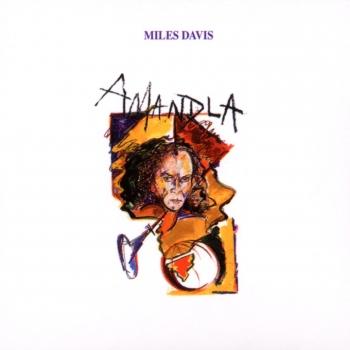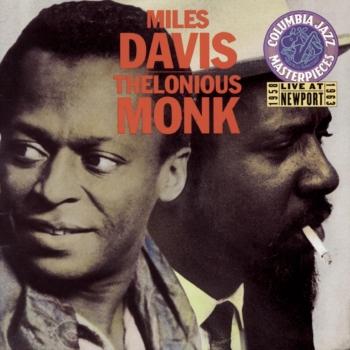
Conception Miles Davis
Album info
Album-Release:
1956
HRA-Release:
24.03.2016
Label: Concord Records
Genre: Jazz
Subgenre: Cool
Artist: Miles Davis, Stan Getz, Gerry Mulligan, Lee Konitz & Martial Solal, Sonny Rollins, Zoot Sims
Composer: Miles Davis
Album including Album cover Booklet (PDF)
I`m sorry!
Dear HIGHRESAUDIO Visitor,
due to territorial constraints and also different releases dates in each country you currently can`t purchase this album. We are updating our release dates twice a week. So, please feel free to check from time-to-time, if the album is available for your country.
We suggest, that you bookmark the album and use our Short List function.
Thank you for your understanding and patience.
Yours sincerely, HIGHRESAUDIO
- 1 Odjenar 02:55
- 2 Hibeck 03:09
- 3 Yesterdays 02:29
- 4 Ezz-thetic 02:56
- 5 Indian Summer 02:37
- 6 Duet For Saxophone And Guitar 02:41
- 7 Conception 04:03
- 8 My Old Flame 06:37
- 9 Intoit 03:22
- 10 Prezervation 02:45
- 11 I May Be Wrong 03:30
- 12 So What 02:44
Info for Conception
„A unique all-star set recorded in various combinations between 1949 and 1951, Conception is an underappreciated masterpiece of cerebral cool jazz. Although Miles Davis gets top billing, he appears on only half the album and then most often as a sideman with only occasional solos. Saxophonists Lee Konitz, Stan Getz, and Gerry Mulligan are the true stars of the album, with Konitz particularly shining. His two duets with guitarist Billy Bauer, a relaxed take on Victor Herbert's standard 'Indian Summer' and his own 'Duet for Saxophone and Guitar,' are outstanding examples of cool jazz as the term was originally understood before it came to signify new age-leaning elevator music; Konitz's solos in 'Indian Summer' disassemble the melody entirely while remaining accessibly tonal, and Bauer's filigree guitar lines stay clear of the uninspired comping of so many jazz guitarists while never sounding overly busy. Of the full-band pieces, Davis' solo spotlight on George Shearing's 'Conception' finds the trumpeter in transition from the still soundscapes of the Birth of the Cool sessions to the more aggressive playing of his Capitol sets, and Stan Getz's two showcases, the originals 'Prezervation' and 'Intoit,' feature the saxophonist in his early role as a committed Lester Young disciple, fronting a solid rhythm trio featuring the underrated pianist Al Haig. An excellent album featuring some outstanding and varied tracks, Conception is well worth seeking out.“ (Stewart Mason, AMG)
Miles Davis, trumpet
Sonny Rollins, tenor saxophone
Zoot Sims, tenor saxophone
Stan Getz, saxophone
Lee Konitz, saxophone
Charlie Kennedy, saxophone
Gerry Mulligan, saxophone
J.J. Johnson, trombone
Kai Winding, trombone
Walter Bishop, piano
Sal Mosca, piano
Al Haig, piano
Tony Aless, piano
Billy Bauer, guitar
Tommy Potter, bass
Arnold Fishkin, bass
Gene Ramey, bass
Chubby Jackson, bass
Art Blakey, drums
Roy Haynes, drums
Max Roach, drums
Stan Levey, drums
Don Lamond, drums
Chubby Jackson's Orchestra
Recorded at the Van Gelder Studio, Hackensack, New Jersey between June 21, 1949 and October 5, 1951
Produced by Bob Weinstock
Digitally remastered
Please Note: we do not offer the 192 kHz version of this album, because there is no audible difference to the 96 kHz version!
Trumpeter Miles Davis grew up in East St. Louis, Illinois, just across the river from St. Louis, Missouri. His parents were affluent, and had the means to support his musical studies as a boy. He began playing the cornet at age nine, and received his first trumpet at around twelve or thirteen. He studied classical technique, and focused mainly on using a rich, clear tone, something that helped define his sound in later years.
As a teenager, he played in various bands in St. Louis, which was rich with jazz, as big bands often stopped there on tours throughout the Midwest and southern states. The most important experience he had was when he was asked to play in the Billy Eckstine band for a week as a substitute. The group included Charlie Parker, Dizzy Gillespie, and Sara Vaughan. After playing with these stars, Davis knew he had to move to New York to be at the heart of the jazz scene.
In Pursuit of Parker:
In 1944 Davis moved to New York City where he had earned a scholarship to study trumpet at the Juilliard School of Music. Upon arriving however, he sought after Charlie Parker, and meanwhile spent all of his time in jazz clubs listening to bebop. He was transfixed on the music, and grew utterly bored with his classical studies. After less than a year at Juilliard, he dropped out and tried his hand at performing jazz.
Although not particularly stunning, his playing was good enough to finally attract Charlie Parker, and Davis joined his quintet in 1945. He was often criticized for sounding inexperienced, and was compared unfavorably to Dizzy Gillespie and Fats Navarro, who were the leading trumpeters at the time. Both boasted stellar technique and range, neither of which Davis possessed. In spite of this, he made a lasting impression on those who heard him, and his career was soon set aloft.
Cool Jazz and a Rise to Fame:
Encouraged by composer and arranger Gil Evans, Davis formed a group in 1949 that consisted of nine musicians, including Lee Konitz and Gerry Mulligan. The group was larger than most bebop ensembles, and featured more detailed arrangements. The music was characterized by a more subdued mood than earlier styles, and came to be known as cool jazz. In 1949 Davis released the album Birth of the Cool (Captiol Records).
Change of artistic direction became central to Davis’ long and increasingly influential career. After dabbling in hard bop as a leader on four Prestige recordings featuring John Coltrane, he signed with Columbia records and made albums that featured Gil Evans’ arrangements for 19-piece orchestra. These were Miles Ahead, Porgy and Bess, Sketches of Spain, and Quiet Nights. He rose in popularity with these recordings, in part due to his signature sound, which he often enhanced by using a Harmon mute.
Kind of Blue and Beyond:
In 1959 Davis made his pivotal recording, Kind of Blue. It was a departure from all of his previous projects, abandoning complicated melodies for tunes that were sometimes only composed of two chords. This style became known as modal jazz, and it allows the soloist expressive freedom since he does not have to negotiate complex harmonies. Kind of Blue also featured John Coltrane, Cannonball Adderley, and Bill Evans. The album is one of the most influential in jazz, and is Columbia Records’ best-selling jazz record of all time.
In the mid 1960s Davis changed directions again, forming a group with Herbie Hancock, Wayne Shorter, Tony Williams, and Ron Carter. This group was known for the excellence of each individual member, and also for its unique performance approach. Each night the tunes would sound different, as the musicians would sometimes only loosely adhere to the song structures, and often transition from one right into the next. Each player was given the chance to develop his solos extensively. Like all of Davis’ previous groups, this quintet was highly influential.
Late Career:
Despite health problems, drug addiction, and strained personal relationships, Davis continued to play, changing his approach with each new project. In the late 60s and 70s, he began to experiment with electronic instruments, and grooves that were tinged with rock and funk music. Two famous recordings from this period are In a Silent Way and Bitches Brew. By the time the 1980s rolled around, Davis was not only a jazz legacy, but a pop icon, whose music, persona, and fashion style were legendary.
Davis died in 1991, as perhaps the most influential jazz artist ever. His vast body of work continues to be a source of inspiration for today’s musicians. (Jacob Teichroew, About.com Guide)
Booklet for Conception






































